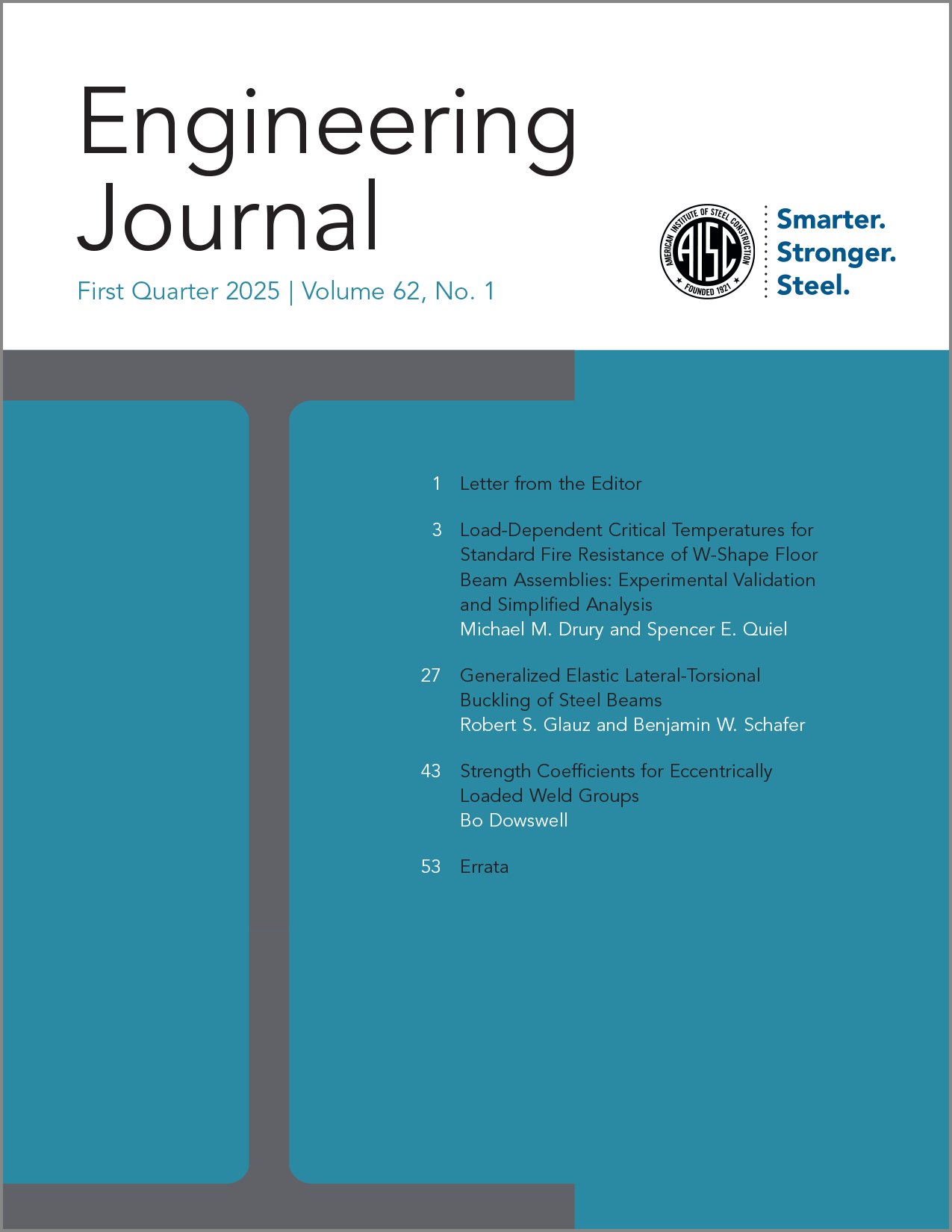Strength Coefficients for Eccentrically Loaded Weld Groups
DOI:
https://doi.org/10.62913/engj.v62i1.1337Keywords:
eccentrically loaded weld groups, electrode strength coefficient, weld ductilityAbstract
When AISC Manual Tables 8-4 through 8-11 are used to calculate the strength of eccentrically loaded weld groups with FEXX ≠ 70 ksi, the values are multiplied by an electrode strength coefficient, C1. The C1 values are dependent on the filler metal classification strength; however, they are not proportional to the filler metal classification strength ratio when FEXX ≥ 80 ksi. To consider the potential effect of reduced ductility, the C1 values include reduction factors of 0.85 and 0.90 for higher-strength welds.
To investigate the accuracy of the electrode strength coefficients, the ductility of high-strength welds was evaluated using the data from 93 experimental tests from three existing research projects with FEXX > 70 ksi. The data was used to plot the weld metal tensile strength versus the normalized rupture deformation of both longitudinal and transverse fillet welds. The analysis showed that, when FEXX ≤ 120 ksi, the C1 values can be based solely on the filler metal classification strength ratio, FEXX/70 ksi, without the reduction factors of 0.85 and 0.90 for higher-strength welds.

